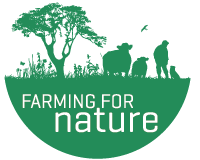Connie O’Connor
Connie O’Connor and his wife Julia farm 47 hectares near the source of the River Blackwater (Munster) at the foot of the Mullaghareirk Mountains on the Cork-Kerry border. His farm connects two Natura 2000 sites: the Stacks to Mullaghareirks SPA and the Blackwater River SAC. His farm is one of the project farms of the EU funded RaptorLIFE project, actively working to improve habitat for Annex species, especially Hen harrier, Atlantic salmon and Brook lamprey. This work involves fencing back 2m off the river, allowing the banks to revegetate, thus stabilising them to prevent erosion and subsequent river siltation. This helps provide clean gravels for spawning salmonids and Brook lamprey, also improving Freshwater pearl mussel habitat and that of critical growth stage of its juveniles (Glochidia). This fenced area in itself provides habitats for birds and small mammals. Connie also has restricted his cattle from entering the river, with the provision of an alternative drinking source, by doing this he has improved the water quality, eliminating the risk of eutrophication and algae on the substrate of the river, this too being detrimental to the spawning gravels of salmonids, Brook lamprey and the habitat of the Freshwater pearl mussel and its juveniles.
Connie farms suckler cattle in a non-intensive approach, using mulching rather than chemicals to manage rushes, to form a mosaic of heights, designed to maximise structural diversity, important to the Hen harrier’s prey species. His farm varies from open rich blanket bog to rough grassland to some improved grassland. He uses minimal fertiliser and low stocking density, thus maintaining his species rich grasslands and reducing damage from poaching. His hedgerows provide food for pollinators, bats and owls and nesting for birds. The bridge adjacent to his land is home to Natterer’s bats, Grey wagtail and probably Daubenton’s bats, indeed Lesser horseshoe bats (our only Annex bat species) has roosted in a nearby building. Connie has a Barn owl box erected in a disused barn, which has successfully attracted some Barn owls to nest there and successfully rear chicks.
“However, perhaps the most important species benefitting from the traditional farming methods used by Connie is the hen harrier, an increasingly threatened bird of prey in the Irish uplands, which nests in decreasing numbers on the Mullaghareirk Mountains on the Kerry-Cork border. Low input, extensive farming like Connie’s are increasingly important in halting this decline in an area where the predominant land use is large scale forestry.”
Connie grew up on the adjacent farm and has farmed these lands all his life. This traditional way of farming was once the norm in Sliabh Luachra but is now disappearing, highlighting all the more Connie’s perseverance in sticking to the values of farming for nature. Indeed this deep-rooted love of the environment and the land is not Connie’s only talent as he also is a talented Sliabh Luachra Sean nós dancer and shows this off each year at the Ploughing Championship, in his wellies!
Nominator: Allan Mee, Project Scientist, IRD Duhallow





